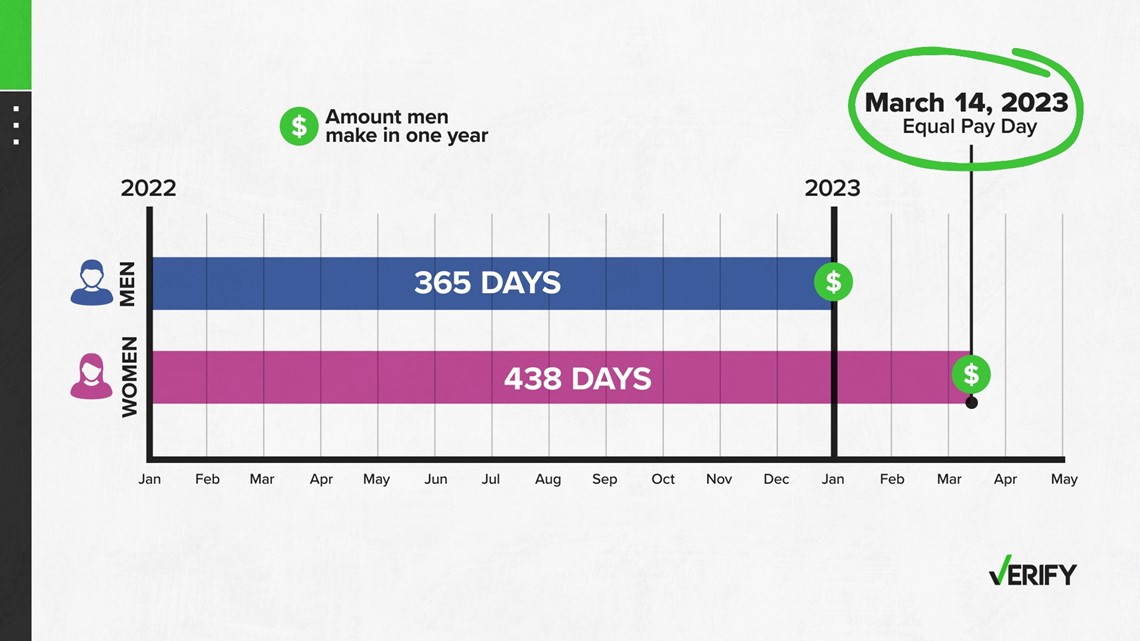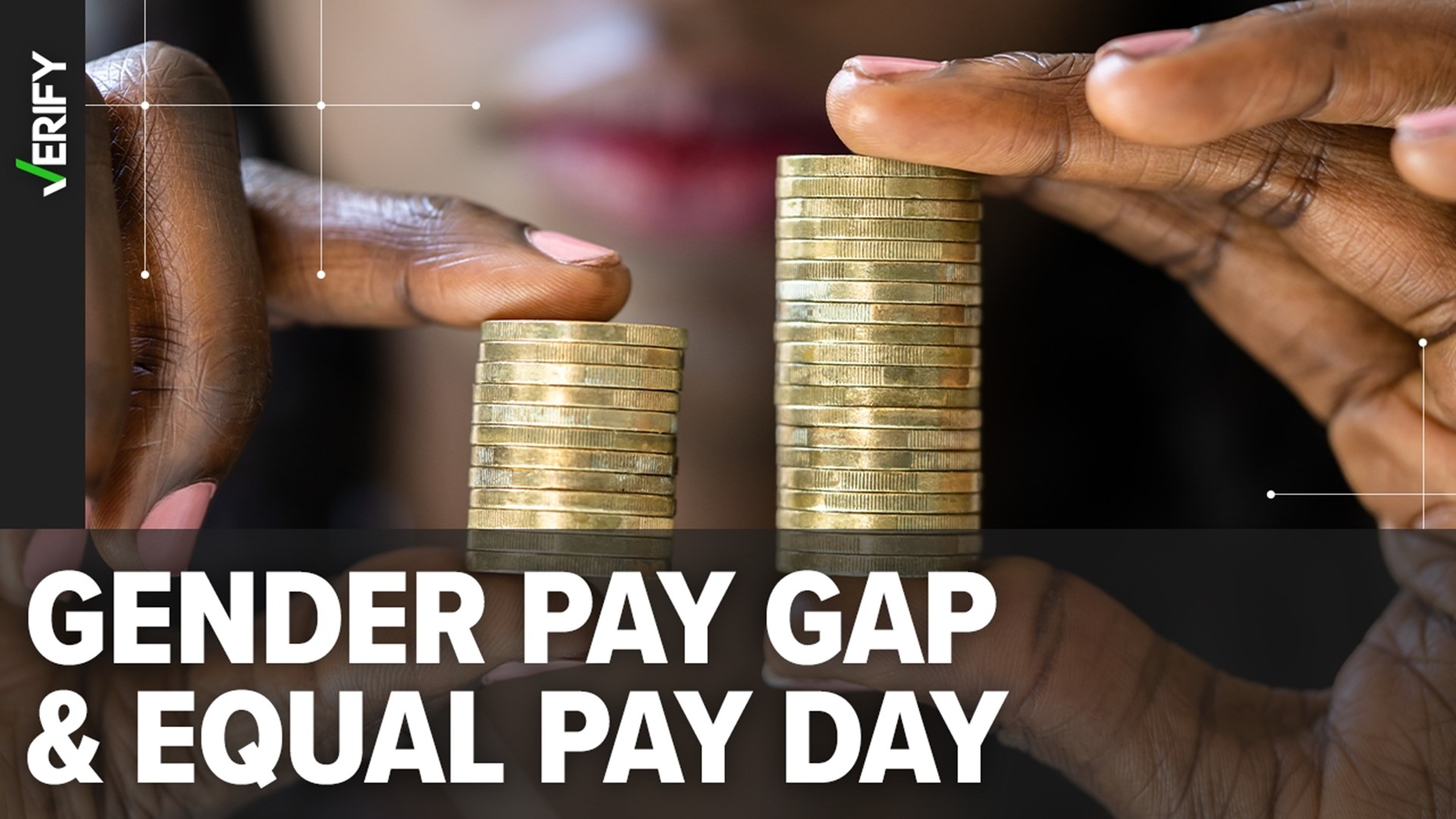Equal Pay Day, which raises awareness about the gender pay gap in the United States, falls on March 14 in 2023.
Advocacy organizations say the day symbolizes how far into a new year a woman must work to earn what a man did in the previous year.
VERIFY looked at the data to see how yearly pay compares between men and women.
THE QUESTION
Do women have to work until March 14 to earn as much money as men did the previous year?
THE SOURCES
- U.S. Census Bureau
- U.S. Bureau of Labor Statistics
- Analysis from Pew Research Center, a nonpartisan fact tank
- Ariane Hegewisch, senior research fellow at the Institute for Women’s Policy Research
- Jessica Kriegel, chief scientist of workplace culture at Culture Partners
THE ANSWER
Yes, women have to work until March 14, 2023, to earn as much money as men did the previous year, based on the latest census data.
WHAT WE FOUND
Advocacy organizations such as the American Association of University Women (AAUW) say the date for Equal Pay Day is based on the latest U.S. Census figures.
The most recent U.S. Census Bureau data compares men’s and women’s median earnings in 2021. Median earnings describe those of a worker in the 50th percentile, or right in the middle. Census data for 2022 isn’t available yet.
Women who worked full-time, year-round took home 83.7% of the pay that men did in 2021, the census data show. This translates to about $61,180 in median earnings for men compared to $51,226 in median earnings for women in 2021.


In other words, a woman would have to work about 1.2 times longer than a man to make the same amount of money.
So does that add up to March 14 in 2023? VERIFY did the math.
If women have to work roughly 1.2 times longer to earn the same amount of money as men do in one year, that means they would have to work 438 days. This adds up to an extra 73 days on top of 365, which lands on March 14 – Equal Pay Day.


More recent wage gap data published by the U.S. Bureau of Labor Statistics for 2022 provide a similar result.
In 2022, Equal Pay Day fell on March 15, the earliest the U.S. had ever marked the occasion before this year, the White House said. Though the U.S. has made some progress over the last several decades, there is still work to do in order to close the gender pay gap, experts say.
An analysis of both full- and part-time workers conducted by Pew Research Center found that U.S. women typically earned 82 cents for every dollar that men earned in 2022.
This is a significant increase from when women were making 65 cents to the dollar in 1985. But the gender pay gap “has barely closed in the past two decades,” since it’s still about the same as it was in 2002 when women earned 80 cents to the dollar, the analysis noted.
There are a handful of key factors that influence the gender pay gap, Ariane Hegewisch, senior research fellow at the Institute for Women’s Policy Research, told VERIFY.
One of those is occupational segregation. Women are often more likely to work in different fields, and jobs that are primarily performed by women with the same level of education and years of experience pay less than jobs primarily performed by men, Hegewisch explained.
In addition, the gender pay gap is wider for women who are part of certain racial or ethnic groups. Pew found that Black women earned 70% as much as white men in 2022, while Hispanic women earned only 65% as much in 2022.
For white women, the ratio stood at about 83%, nearly the same as the overall earnings gap, according to Pew.
“There’s a disparity not just about gender, but around race and gender,” Jessica Kriegel, chief scientist of workplace culture at Culture Partners, told VERIFY. “The intersection of various different demographics can greatly affect where you lay in the pay scale.”












